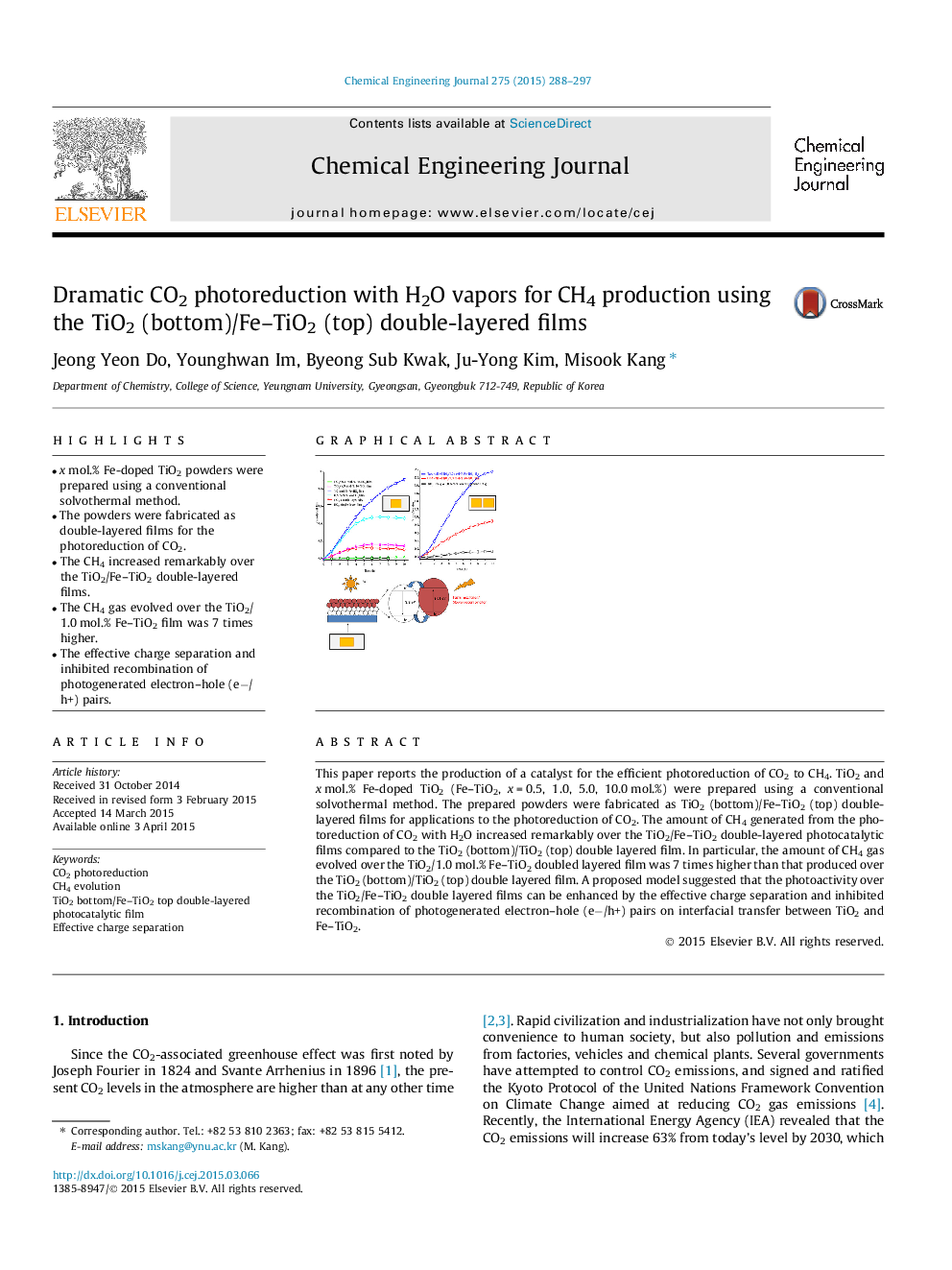| کد مقاله | کد نشریه | سال انتشار | مقاله انگلیسی | نسخه تمام متن |
|---|---|---|---|---|
| 146267 | 456365 | 2015 | 10 صفحه PDF | دانلود رایگان |

• x mol.% Fe-doped TiO2 powders were prepared using a conventional solvothermal method.
• The powders were fabricated as double-layered films for the photoreduction of CO2.
• The CH4 increased remarkably over the TiO2/Fe–TiO2 double-layered films.
• The CH4 gas evolved over the TiO2/1.0 mol.% Fe–TiO2 film was 7 times higher.
• The effective charge separation and inhibited recombination of photogenerated electron–hole (e−/h+) pairs.
This paper reports the production of a catalyst for the efficient photoreduction of CO2 to CH4. TiO2 and x mol.% Fe-doped TiO2 (Fe–TiO2, x = 0.5, 1.0, 5.0, 10.0 mol.%) were prepared using a conventional solvothermal method. The prepared powders were fabricated as TiO2 (bottom)/Fe–TiO2 (top) double-layered films for applications to the photoreduction of CO2. The amount of CH4 generated from the photoreduction of CO2 with H2O increased remarkably over the TiO2/Fe–TiO2 double-layered photocatalytic films compared to the TiO2 (bottom)/TiO2 (top) double layered film. In particular, the amount of CH4 gas evolved over the TiO2/1.0 mol.% Fe–TiO2 doubled layered film was 7 times higher than that produced over the TiO2 (bottom)/TiO2 (top) double layered film. A proposed model suggested that the photoactivity over the TiO2/Fe–TiO2 double layered films can be enhanced by the effective charge separation and inhibited recombination of photogenerated electron–hole (e−/h+) pairs on interfacial transfer between TiO2 and Fe–TiO2.
Figure optionsDownload as PowerPoint slide
Journal: Chemical Engineering Journal - Volume 275, 1 September 2015, Pages 288–297